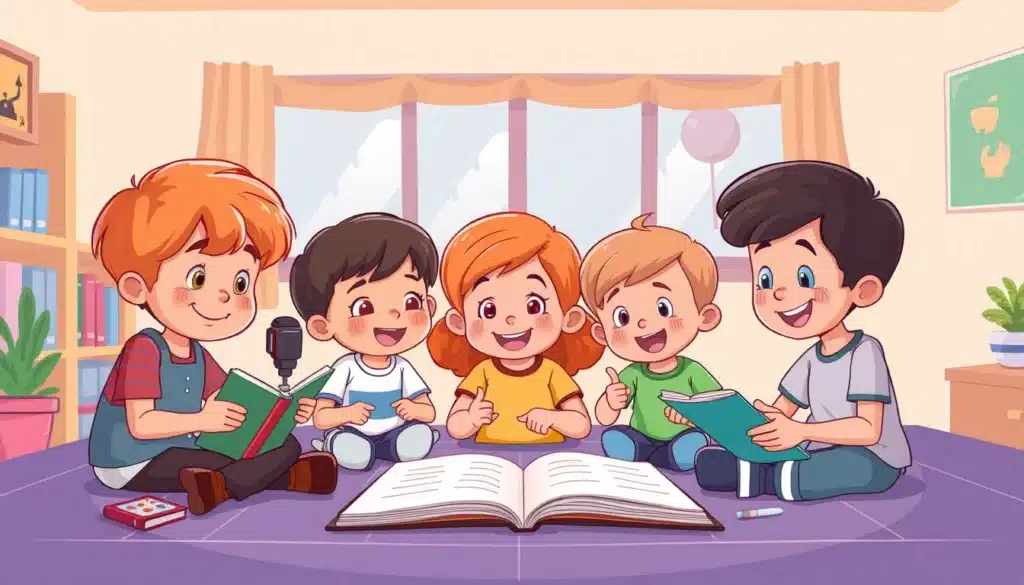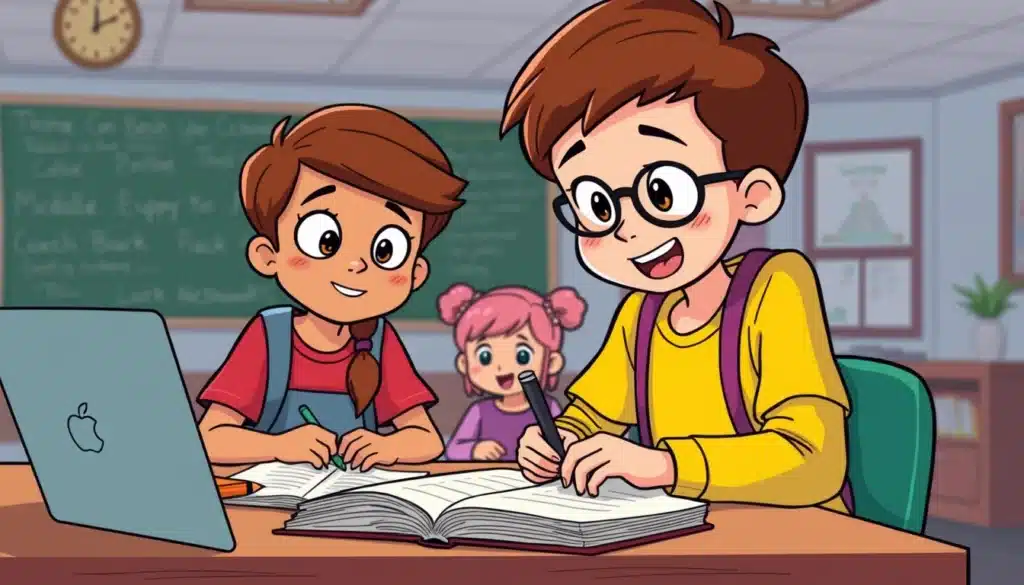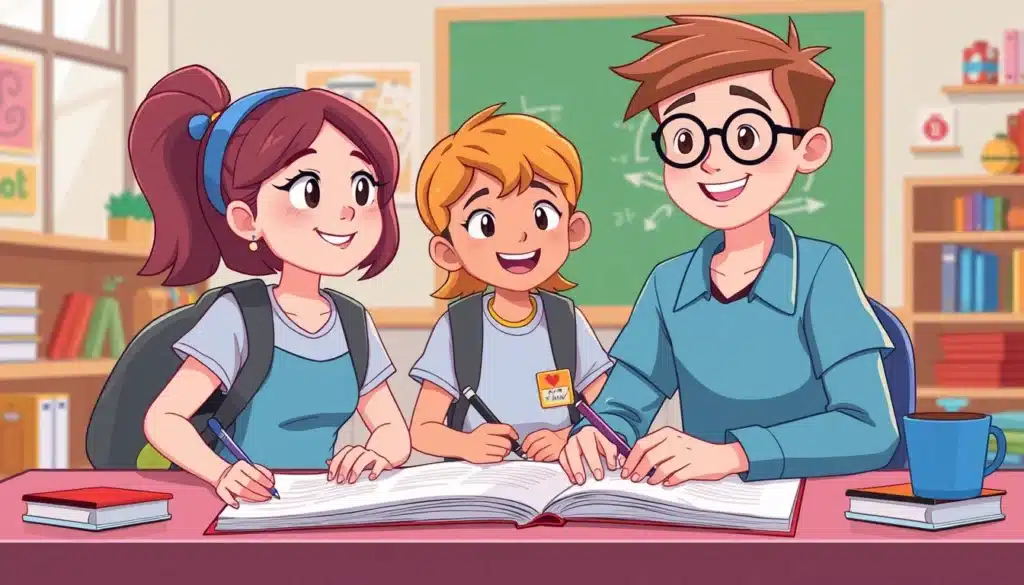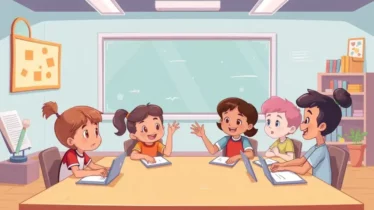Age-Based Chinese Learning: A Comprehensive Guide for Parents
When it comes to learning Chinese, timing truly matters. As a language with unique features that differ significantly from English—from tonal pronunciation to character-based writing—Chinese learning should be tailored to a child’s developmental stage for optimal results. At GoEast Mandarin, we’ve observed firsthand how children of different ages engage with the language in distinct ways.
This guide explores how Chinese language acquisition naturally evolves as children grow, highlighting age-appropriate approaches that work best at each developmental stage. After teaching thousands of young learners, we’ve gathered insights that go beyond theoretical knowledge—these are practical observations from our classrooms.
Understanding the Age Advantage in Language Learning
Children possess a remarkable neural plasticity that gradually changes as they develop. For language acquisition, this creates different windows of opportunity:
Young children absorb sounds and pronunciation with an ease that older learners often envy. One of my students, a 4-year-old named Emma, mastered the challenging third tone in Mandarin within weeks—something adult learners commonly struggle with for months.
Older children bring cognitive advantages to the table. They understand patterns more readily and can apply language learning strategies that accelerate certain aspects of proficiency. This doesn’t mean starting later is better—rather, each age brings different strengths to the language learning process.
Let’s explore how Chinese learning evolves through childhood and adolescence, and how we can best support learners at each stage.
| Age Group | Key Learning Characteristics | Focus Areas |
|---|---|---|
| Toddlers (2-3) | Natural sound absorption, short attention span | Tones, basic vocabulary, listening |
| Preschoolers (3-5) | Imagination, story comprehension | Vocabulary building, simple conversations, character recognition |
| Elementary (6-10) | Literacy development, pattern recognition | Character writing, reading, basic grammar |
| Middle School (11-13) | Abstract thinking, social awareness | Expanded vocabulary, intermediate grammar, cultural context |
| High School (14-18) | Cognitive maturity, goal orientation | Advanced reading, specialized vocabulary, exam preparation |
Toddlers (2-3 years): The Natural Sound Absorbers
Toddlers are in a linguistic golden period. Their developing brains absorb language sounds like sponges, often with remarkable accuracy.
Natural Learning Patterns at This Age
At this stage, children learn almost entirely through immersion, repetition, and play. They won’t be consciously studying Chinese—they’ll be acquiring it through experience.
In our toddler classes, we observe that children this age:
- Pick up tones with surprising precision when exposed consistently
- Learn through movement, song, and tactile experiences
- Benefit tremendously from routine and repetition
- Respond to immediate positive reinforcement
One toddler in our program would involuntarily move her hand in different directions when pronouncing different tones—she had created her own physical connection to these abstract sound patterns without explicit instruction.
Effective Teaching Approaches
For toddlers, Chinese learning should feel like play. Our teachers use:
- Short, engaging activities that change every 5-7 minutes
- Songs with movements that reinforce vocabulary
- Colorful props and visual aids
- Simple commands and responses in Chinese
- Child-directed speech with exaggerated tones
We deliberately avoid explicit correction at this age. Instead, we model correct pronunciation naturally in response.
Read more about our approach to Chinese language learning for toddlers
Preschoolers (3-5 years): Story and Imagination-Based Learning
Preschoolers bring a new cognitive dimension to language learning: they love stories and have blossoming imaginations that can be powerful learning tools.
Natural Learning atterns at This Age
At GoEast, we notice preschoolers:
- Begin recognizing some basic characters (often their names first)
- Start associating meanings with sounds more consistently
- Enjoy role-playing conversations
- Can follow longer instructions in Chinese
- Begin displaying curiosity about how the language works
Ming, a 4-year-old student, could retell a simple Chinese story we had covered in class with surprising accuracy—not by memorizing it word for word, but by reconstructing the meaning through the vocabulary he had internalized.
Effective Teaching Approaches
For preschoolers, we focus on:
- Storytelling with visual support
- Guided conversation practice through puppets and role-play
- Chinese songs and rhymes that build phonological awareness
- Simple character recognition activities
- Cultural experiences that contextualize the language
While preschoolers aren’t ready for formal writing practice, we introduce character awareness through fun activities like tracing characters in sand or creating them with playdough.
Learn more about our Chinese learning approach for preschoolers
Elementary School Children (6-10 years): Building Literacy Foundations
Elementary years mark a significant shift as children develop literacy skills in their native language that can transfer to Chinese learning.
Natural Learning Patterns at This Age
Elementary students at GoEast typically:
- Begin systematic character learning with understanding of stroke order
- Develop an interest in the logic behind character formation
- Can engage in simple conversations about familiar topics
- Start writing short sentences
- Become more aware of grammar patterns
- Take pride in measurable achievements
We’ve noticed that children who begin at this age often ask “why” questions about the language—they’re not just mimicking, but seeking to understand patterns and rules.
Effective Teaching Approaches
Our elementary program emphasizes:
- Systematic character instruction using memorable stories about character origins
- Reading and writing practice integrated with speaking
- Clear explanations of basic grammar patterns
- Games that practice specific language skills
- Introduction to Chinese culture through age-appropriate activities
- Progress tracking that gives children a sense of achievement
Many parents notice their children drawing connections between Chinese characters and concepts they’re learning in other subjects—this cross-disciplinary thinking is something we actively encourage.
Explore our Chinese curriculum for elementary school children
Middle School Students (11-13 years): Expanding Communication Skills
Middle schoolers bring more sophisticated thinking to language learning while still retaining much of the neural flexibility of younger learners.
Natural Learning Patterns at This Age
At this transitional age, students:
- Begin to understand more complex grammar
- Can engage in longer conversations on broader topics
- Are capable of more sustained focus on language tasks
- Can use reference materials independently
- Often develop special interest areas in Chinese (like sports, music, or games)
- May become more self-conscious about making mistakes
One of our middle school students became fascinated with Chinese pop music and used it as a pathway to dramatically improve his listening comprehension and vocabulary—proving that connecting language learning to personal interests can be incredibly effective.
Effective Teaching Approaches
Our middle school curriculum focuses on:
- Expanded vocabulary related to students’ interests
- More sophisticated conversation scenarios
- Regular writing practice with personalized feedback
- Introduction to Chinese-language media appropriate for their age
- Cultural projects that deepen understanding
- Technology integration that supports independent learning
We find that middle schoolers respond well to challenges and friendly competition, so we incorporate these elements thoughtfully into our lessons.
Discover our approach to teaching Chinese to middle school students
High School Students (14-18 years): Towards Advanced Proficiency
High school students bring cognitive maturity to language learning, allowing for more advanced approaches.
Natural Learning Patterns at This Age
Teenage learners at GoEast:
- Can grasp abstract concepts in Chinese
- Are capable of analyzing language patterns
- Can read more complex texts with support
- Begin developing specialized vocabulary in areas of interest
- May have specific goals (travel, college applications, career interests)
- Often show interest in contemporary Chinese culture and society
High school students often have the metacognitive skills to reflect on their own learning process, which can accelerate progress when properly supported.
Effective Teaching Approaches
Our high school program includes:
- More sophisticated text analysis
- Discussion of age-appropriate cultural and social topics
- Preparation for standardized tests like the HSK or AP Chinese
- Projects that integrate multiple language skills
- Connections to practical applications of Chinese skills
- Guidance on continued Chinese study options for college and beyond
We’ve helped many high school students prepare for specific goals—whether it’s an upcoming trip to China, a college application where language skills are an asset, or simply personal enrichment.
The Heritage Learner Consideration
Children growing up in families with Chinese-speaking members present unique opportunities and challenges. Heritage learners often have advantages in pronunciation and listening comprehension, but may need extra support in other areas.
For these students, we tailor our approach to:
- Build on existing language strengths
- Fill specific knowledge gaps
- Address character learning systematically
- Develop formal language skills that may not be used at home
- Connect language learning to cultural identity in a positive way
Some heritage learners come to us with conversational fluency but limited literacy. Others may understand a regional dialect but need support with standard Mandarin. Our personalized assessment process ensures we meet each child exactly where they are.
Choosing the Right Program for Your Child
When selecting a Chinese language program for your child, consider:
- Your child’s current age and developmental stage
- Previous language exposure (if any)
- Learning preferences and personality
- Practical goals for language acquisition
- Family capacity for supporting learning at home
- Program teaching philosophy and methodology
At GoEast Mandarin, we recommend a free consultation to assess your child’s specific needs before placing them in a program. This ensures the learning experience is optimally matched to their developmental stage and personal learning style.
Parents often ask us: “What if we missed the early childhood window? Is it too late?” The answer is reassuring—while early exposure offers certain advantages, older children and teenagers bring their own strengths to Chinese learning. We’ve seen remarkable progress in learners who start at every age.
Supporting Your Child’s Chinese Learning Journey
Regardless of when your child begins learning Chinese, parental support makes a significant difference. Here are practical ways to enhance your child’s experience:
- Express genuine interest in what they’re learning
- Create opportunities for authentic language use outside class
- Establish a consistent routine for practice
- Celebrate progress rather than focusing on perfection
- Connect with the culture through food, films, or community events
One parent in our program created a “Chinese corner” in their home where they would spend 15 minutes daily using only Chinese—a simple but effective reinforcement strategy.
Meeting Children Where They Are
The most effective Chinese language education recognizes and respects children’s developmental stages. At GoEast Mandarin, our age-appropriate teaching methodologies are designed to work with—rather than against—the natural cognitive and social development of children.
We invite you to explore our specialized programs for each age group and discover how Chinese learning can be a joyful, confidence-building journey for your child at any age. The best Chinese learning program is one that respects who your child is right now while helping them grow into who they can become.
Frequently Asked Questions
How long does it take children to become fluent in Chinese?
Should children learn simplified or traditional characters?
How can parents support Chinese learning at home?
How does Chinese learning benefit cognitive development?
How does GoEast's approach differ from other Chinese programs?








